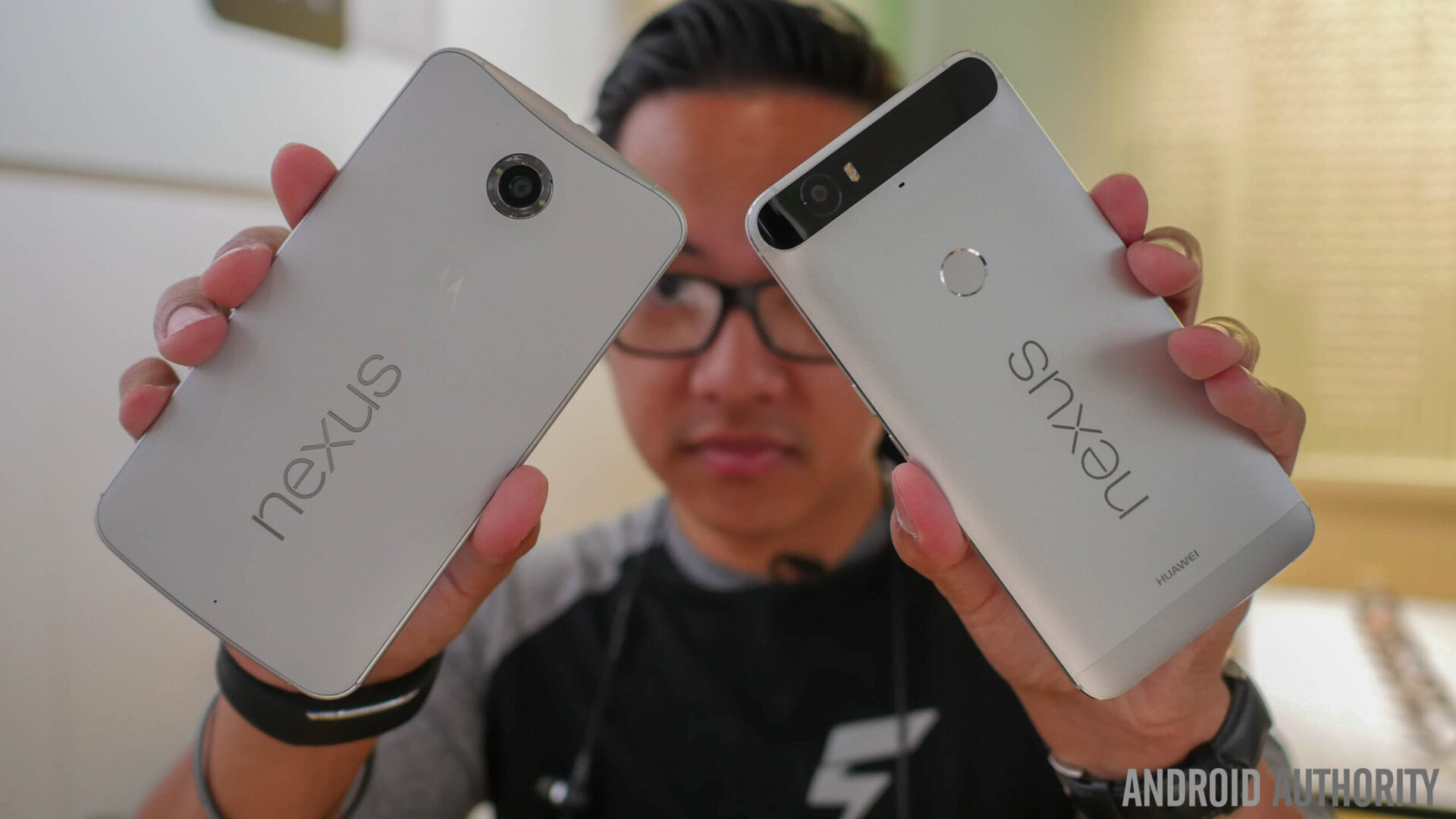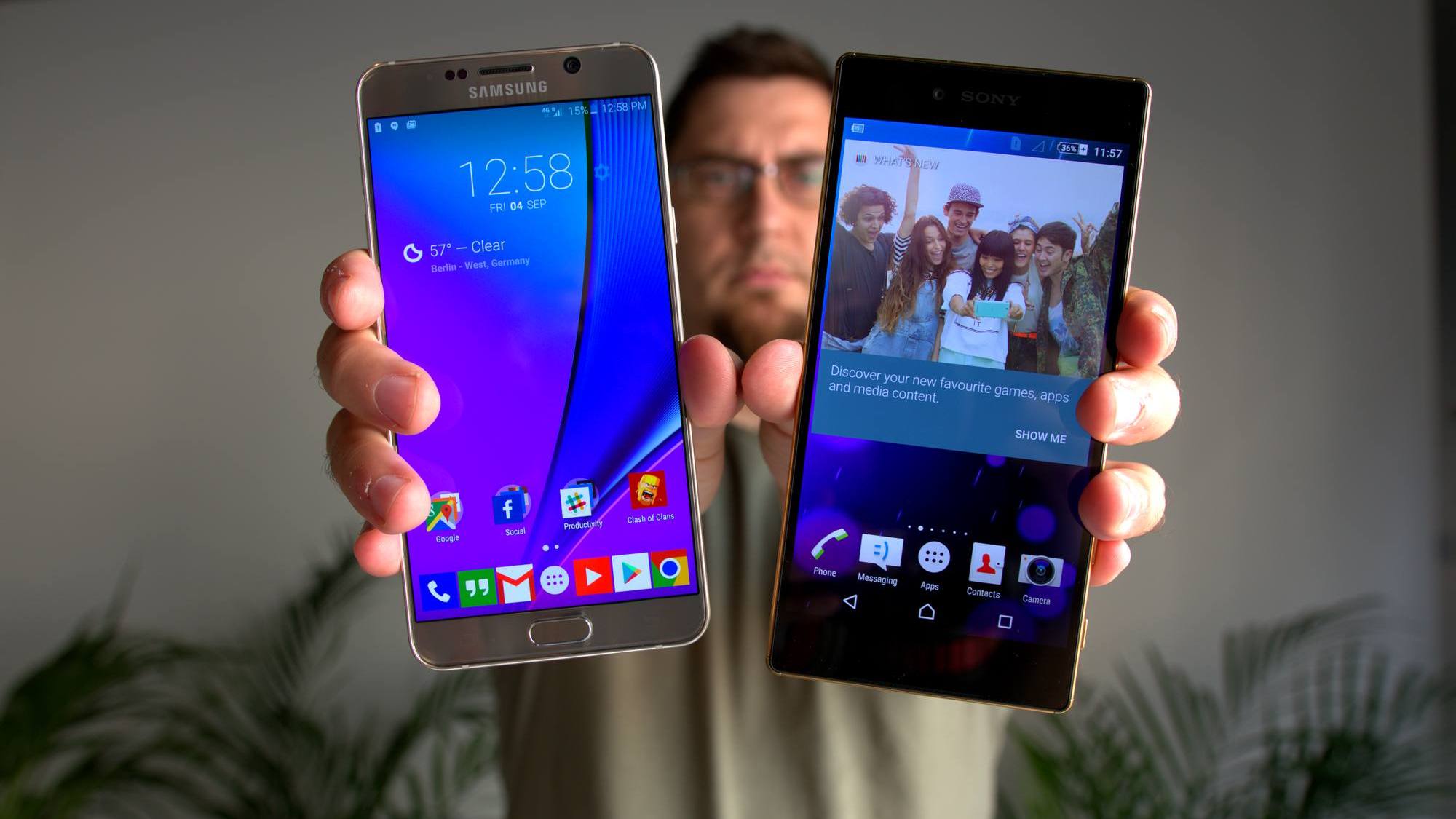Affiliate links on Android Authority may earn us a commission. Learn more.
By the numbers: Lumia 950 / XL vs the Android competition
Published onOctober 6, 2015

Android smartphones and the iPhone tend to lead the way in the mobile market but Microsoft hopes that Windows 10 can change this status quo and has today unveiled two new devices to hoping to do just that: Lumia 950 and the Lumia 950 XL.
The most advanced Windows smartphones ever produced, the Lumia 950 and the Lumia 950 XL may certainly make a stand in the market but how do they compare to the best that Android has to offer? For this comparison, we’re bringing out the big guns in the form of the Galaxy G6 Edge, Galaxy Note 5, Xperia Z5 Premium, the LG G4 and the Google Nexus 6P.
| Lumia 950 | Lumia 950 XL | Nexus 6P | Xperia Z5 Premium | Galaxy Note 5 | Galaxy S6 Edge | LG G4 | |
|---|---|---|---|---|---|---|---|
Display | Lumia 950 5.2-inch AMOLED QHD (2560x1440) 564 ppi | Lumia 950 XL 5.7-inch AMOLED QHD (2560x1440) 518ppi | Nexus 6P 5.7-inch AMOLED QHD (1440x2560) 518ppi | Xperia Z5 Premium 5.5-inch LCD 4K (3840 X 2160) 801ppi | Galaxy Note 5 5.7-inch AMOLED QHD (2560x1440) 518ppi | Galaxy S6 Edge 5.1-inch AMOLED QHD (2560x1440) 577ppi | LG G4 5.5-inch LCD QHD (2560x1440) 538ppi |
SoC | Lumia 950 Snapdragon 808 | Lumia 950 XL Snapdragon 810 | Nexus 6P Snapdragon 810 | Xperia Z5 Premium Snapdragon 810 | Galaxy Note 5 Exynos 7420 | Galaxy S6 Edge Exynos 7420 | LG G4 Snapdragon 808 |
CPU | Lumia 950 2x 1.8GHz Cortex-A57 4x 1.44GHz Cortex-A53 | Lumia 950 XL 4x 2GHz Cortex-A57 4x 1.5GHz Cortex-A53 | Nexus 6P 4x 2GHz Cortex-A57 4x 1.55GHz Cortex-A53 | Xperia Z5 Premium 4x 1.9GHz Cortex-A57 4x 1.5GHz Cortex-A53 | Galaxy Note 5 4x 2.1GHz Cortex-A57 4x 1.5GHz Cortex-A53 | Galaxy S6 Edge 4x 2.1GHz Cortex-A57 4x 1.5GHz Cortex-A53 | LG G4 2x 1.8GHz Cortex-A57 4x 1.4GHz Cortex-A53 |
GPU | Lumia 950 Adreno 418 | Lumia 950 XL Adreno 430 | Nexus 6P Adreno 430 | Xperia Z5 Premium Adreno 430 | Galaxy Note 5 Mali-T760 MP8 | Galaxy S6 Edge Mali-T760 MP8 | LG G4 Adreno 418 |
RAM | Lumia 950 3GB | Lumia 950 XL 3GB | Nexus 6P 3GB | Xperia Z5 Premium 3GB | Galaxy Note 5 4GB | Galaxy S6 Edge 3GB | LG G4 3GB |
Storage | Lumia 950 32GB | Lumia 950 XL 32GB | Nexus 6P 32/64/128GB | Xperia Z5 Premium 32GB | Galaxy Note 5 32/64/128GB | Galaxy S6 Edge 32/64/128GB | LG G4 32GB |
MicroSD | Lumia 950 Yes, up to 200GB | Lumia 950 XL Yes, up to 200GB | Nexus 6P No | Xperia Z5 Premium yes, up to 200GB | Galaxy Note 5 No | Galaxy S6 Edge No | LG G4 Yes, up to 128GB |
Camera | Lumia 950 20MP rear 5MP front | Lumia 950 XL 20MP rear 5MP front | Nexus 6P 12MP rear 8MP front | Xperia Z5 Premium 23MP rear 5MP front | Galaxy Note 5 16MP rear 5MP front | Galaxy S6 Edge 16MP rear 5MP front | LG G4 16MP rear 8MP front |
While many predicted that display technology would plateau at Full HD or QHD, this year has seen Samsung push the boat out with the curved QHD AMOLED display on the Edge range and Sony has trumped the competition with the introduction of the world’s first 4K smartphone display on the Xperia Z5.
The Lumia 950 and Lumia 950 XL are the first Windows powered smartphones to offer Quad HD resolution and with a pixel density of over 500 pixels per inch on each AMOLED panel, the displays can certainly challenge the best that Android has to offer. A key feature of the new devices is Glance Screen, which allows Microsoft to only turn the pixels it needs to display information at a glance as soon as you pull your phone out of your pocket.
Although Microsoft has previously insisted that the optimisation of the Windows core means Windows Phone doesn’t need quad-core devices, the company has included the latest Qualcomm chipsets inside its new devices. The smaller Lumia 950 comes with the hexa-core Snapdragon 808 found inside the Nexus 5X and the LG G4 while the Lumia 950 XL comes with an octa-core Snapdragon 810, as found in the Nexus 6P and Sony Xperia Z5 Premium.

With so much processing power, none of these smartphones are going to struggle in demanding scenarios but there’s a key reason Microsoft chose these processors for its new devices; when paired with the new DisplayDock, both smartphones turn into a fully fledged PC. Windows 10 comes with universal apps, which means when connected to the DisplayDock and sharing to a big display, the same Windows Phone apps become full-sized desktop PC apps.
Last year, Microsoft completed its acquisition of Nokia and with it, the company gained Nokia’s pedigree for making smartphone cameras. In the time since Nokia last made a flagship smartphone, Android cameras have improved dramatically and Microsoft’s latest smartphones certainly have a challenge ahead.

The company says the handsets have a 20MP PureView camera with Carl ZEISS Optics, fifth-generation Optical Image Stabilisation and a three-LED flash that helps to prevent Red Eye and results in clear photos. In comparison, Samsung has its highly impressive 16MP OIS camera in the Galaxy Note 5 (and S6 Edge), LG has a 16MP camera with OIS, laser autofocus and a colour spectrum sensor and Sony has a new 23MP camera inside the Xperia Z5.
Google has taken a different approach in the Nexus 6P, packing it with a 12MP camera with much larger pixels (1.55µm pixel size) and laser autofocus, which produces outstanding quality images. Which camera is best on the market remains to be seen but there’s no doubt that any of these smartphone cameras will be good enough for whatever you throw at it.
| Lumia 950 | Lumia 950 XL | Nexus 6P | Xperia Z5 Premium | Galaxy Note 5 | Galaxy S6 Edge | LG G4 | |
|---|---|---|---|---|---|---|---|
Battery | Lumia 950 3000mAh Removable: Yes | Lumia 950 XL 3340mAh Removable: Yes | Nexus 6P 3450mAh Removable: No | Xperia Z5 Premium 3,430mAh Removable: No | Galaxy Note 5 3,000mAh Removable: No | Galaxy S6 Edge 2,600mAh Removable: No | LG G4 3,000mAh Removable: Yes |
Fast Charging? | Lumia 950 Yes | Lumia 950 XL Yes | Nexus 6P Yes | Xperia Z5 Premium Quick Charge 2.0 | Galaxy Note 5 Yes | Galaxy S6 Edge Yes | LG G4 Quick Charge 2.0 |
Wireless Charging? | Lumia 950 Yes | Lumia 950 XL Yes | Nexus 6P No | Xperia Z5 Premium No | Galaxy Note 5 Qi and PMA | Galaxy S6 Edge Qi and PMA | LG G4 Qi (optional cases) |
Biometrics | Lumia 950 Windows Hello Facial Recognition | Lumia 950 XL Windows Hello Facial Recognition | Nexus 6P Fingerprint Scan | Xperia Z5 Premium Fingerprint Scan | Galaxy Note 5 Fingerprint Scan | Galaxy S6 Edge Fingerprint Scan | LG G4 None |
IP rating | Lumia 950 No | Lumia 950 XL No | Nexus 6P No | Xperia Z5 Premium IP68 | Galaxy Note 5 No | Galaxy S6 Edge No | LG G4 No |
Dimensions | Lumia 950 145 x 73.2 x 8.2 mm | Lumia 950 XL 151.9 x 78.4 x 8.1mm | Nexus 6P 159.3 x 77.8 x 7.3mm | Xperia Z5 Premium 154.4 x 75.8 x 7.8mm | Galaxy Note 5 153.2 x 76.1 x 7.6mm | Galaxy S6 Edge 142.1 x 70.1 x 7mm | LG G4 148.9 x 76.1 x 9.8 mm |
Weight | Lumia 950 150g | Lumia 950 XL 164g | Nexus 6P | Xperia Z5 Premium 180g | Galaxy Note 5 171g | Galaxy S6 Edge 132g | LG G4 155g |
When it comes to additional features, each of these handsets has something that makes it truly unique; Samsung’s S-Pen sets the Galaxy Note 5 aside, while the unique dual-curved edge set the Galaxy S6 Edge apart. Sony remains committed to water and dust resistance, while LG have opted for a removable battery and expandable storage – which are missing from many flagships – to set the G4 aside. For the Nexus 6P, Google has aimed to combine premium specs with a super smooth experience and fast updates to set its flagship apart from the competition.
There’s no denying that fingerprint sensors are a key part of the experience and most of these flagships sport one, except for the LG G4 and the new Lumia. Instead, Microsoft’s new devices come with a feature called Windows Hello that promises military-grade security and lets you unlock your phone just by looking at it. Which is perfect for you depends on whether you want a physical fingerprint sensor or want your phone to unlock automatically, but there’s no denying that biometrics are having an increasingly-growing part to play in the way we interact with our smartphones.
A key difference between the new Lumia 950 and Lumia 950 XL and the best of Android comes down to the platform as Microsoft’s latest devices run on Windows 10, while the other devices run on, well, Android. Microsoft’s platform is similar to Windows Phone 8 (albeit with some major improvements) and for the most part, the simplified interface and ease-of-use certainly make the handsets an interesting alternative to Android. Although Windows doesn’t have all the apps of Android, it does have most of them and devices like the Lumia 950 and Lumia 950 XL may help to reduce the gap further.
So what do you think of Microsoft’s new devices and would you buy either? Let us know your views in the comments below guys!